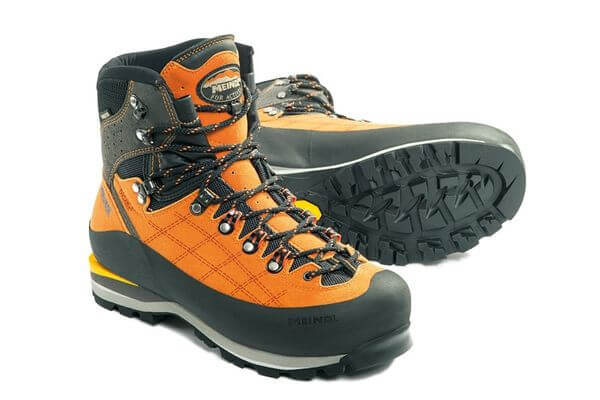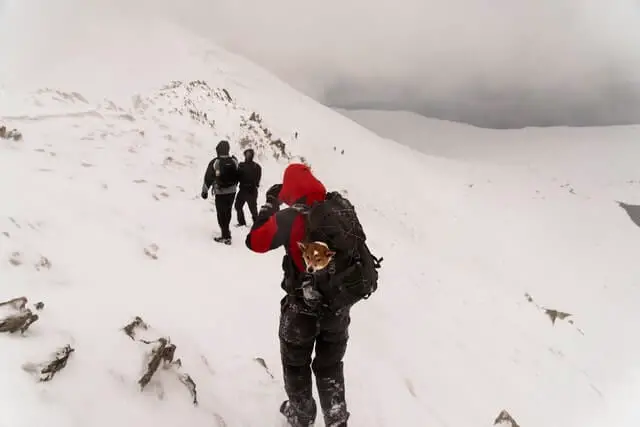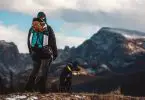One of the great things about going hiking is the views that you can come across, and views of fields or hills covered in crisp fresh snow are some of the most picturesque. However, that might lead you to wonder whether hiking boots work well in snow?
Yes, hiking boots can be a great choice for light to medium amounts of snow, however, waterproofing, and warm socks are essential to keep your feet warm. For deeper snow, it can be better to use snowshoes to prevent post-holing.
Using Hiking Boots In The Snow – How And When
When considering whether or not to wear hiking boots when you’re out hiking in snow it will come down to the condition of the snow. What you need for a small amount of well-compacted snow will be quite different from what you need for deep non-compacted snow.
Icy Snow
When you’re considering hiking and the snow has solidified into an icy surface then you are going to want to focus on increasing the amount of grip you have on the ground. While hiking boots have a good amount of grip and are far better than normal sneakers for this sort of condition, the more grip you can have the better.
You may want to consider using microspikes or crampons to help you to get a better grip on the icy surface. To briefly summarize the difference between microspikes and crampons, microspikes have smaller spikes on them and provide a better grip on ground ice. Whereas crampons were originally designed for climbing and have far more aggressive spikes on them to provide better traction.
Recommended Reading: If you’re interested in crampons then we maintain a list of our top picks for crampons, which might be of interest.
Light Snow
Hiking boots are a perfect choice for hiking in light snow. If the snow is not more of an icy surface then the grip on your hiking boots should be more than enough for you to get a great grip and help to avoid slipping.
Even with just light snow, it would be worth wearing a more insulating pair of hiking socks than you would normally wear. This will help to keep your feet nice and toasty.
If you’re likely to be out while it is snowing then it might be worth ensuring that you have properly waterproofed your hiking boots. While your feet are unlikely to get very wet from falling snow, it’s better to avoid the situation if you can.
Recommended Reading: We have a great guide on how to waterproof your hiking boots that may be of use.
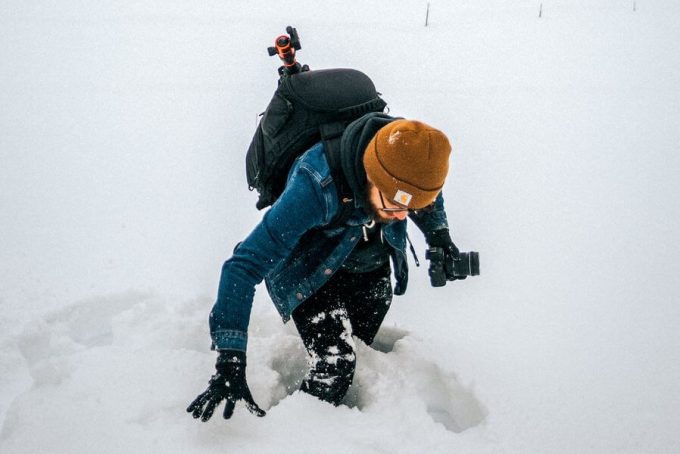
Heavy Snow
With a heavy amount of now you’re likely to find that the snow comes up above the top of your hiking boots. For this reason, it can be useful to wear gaiters. This will help to keep snow from getting into the tops of your boots, which can melt and cause your feet to get wet. We maintain a list of our favorite gaiters that you can currently purchase.
Something that is worth thinking about if you’re going hiking through heavy snow is that you’re likely to ‘post-hole’. Post-holing is where you are trying to walk on deep now and then you end up sinking into your knees if you’re lucky.
Post-holing not only makes it far harder for you to walk, if you’re hiking in an area that is shared with skiers then it is considered to be bad trail etiquette to post-hole. This is because while it may just be an inconvenience to you, it can be dangerous for them where their skis hit the post-hole sending them flying.
For these reasons, it’s recommended that you use snowshoes when walking on deep, uncompacted snow.
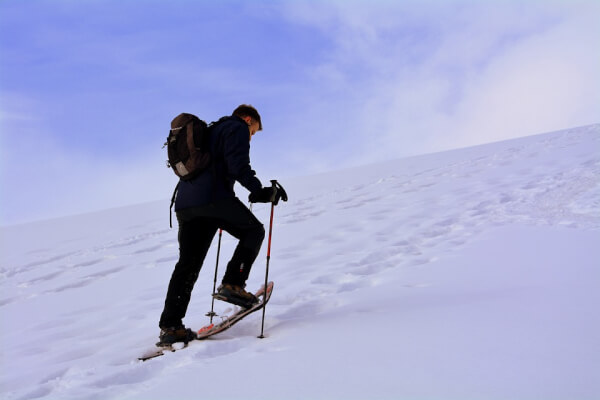
When To Use A Snowshoe Instead Of Hiking Boots?
Snowshoes are specialist attachments for your boots that spread your weight over a larger area than your boots would normally. What this does it allow you to walk on surfaces that wouldn’t normally be able to support your weight. As you might have guessed by the name, the primary surface they focus on is snow.
You should look to use snowshoes when the snow isn’t compacted enough to allow you to walk on top of it, resulting in you sinking into the snow. If you’re only going to do this for a short distance this shouldn’t be an issue but over a prolonged period, this will get very tiring.
One of the biggest problems that people have with snowshoes is the idea of having to carry the extra weight. Snowshoes can weigh four or five pounds a pair. However, despite their weight, snowshoes can save you a huge amount of energy. By allowing you to walk on top of deep snow it avoids you having to trudge through, which gets exhausting very quickly.
Recommended Reading: We’re written an article on how to snowshoe, or if you’re the DIY type you can look at our guide on how to make your own snowshoes.
How To Keep Your Feet Warm When Hiking In Snow?
While this sounds obvious, one of the biggest problems people have when they’re hiking through snow is their feet getting cold. A lot of beginners may feel that their hiking boots will keep their feet warm enough, this usually isn’t the case.
Unless you’ve purchased hiking boots that are intended to be used for snow you’re likely to find your feet getting cold. This will very quickly get in the way of you enjoying your hike. So what can you do to keep your feet warm when you’re hiking in the snow?
Keeping your feet warm when hiking in snow comes down to two factors. Wearing warm, insulating socks, and keeping those socks dry. This is because wet socks will quickly drain heat from your feet.
Another option you can look into is Sorel-type boots. As the waterproof part of these boots come higher than on normal boots, it helps to keep moisture out of the boots. However, it should be noted that once water gets into the boots it can start to form puddles inside as there’s no way for the water to get out.

Are Bright Hiking Boots Good For Snow?
At first, this may sound like a bit of a silly question but it has its roots in personal safety.
While the color of your hiking boots does nothing to change the level of grip, insulation, or comfort, having a color that doesn’t appear in nature will help search & rescuers pick you out if you get hurt. It’s the same reason we recommend not to wear all white when going out in the snow, as this makes it harder for people to see you if you get injured.
During search and rescue operations, things that appear out of place will draw the attention of the searchers far easier than browns and greens.
Obviously, we always hope not to be in a position where we need to be rescued, or be in a position where we couldn’t call out if rescuers were nearby but planning for these sorts of situations can give you peace of mind.
